STITCHING GUIDE
Fabric | Threads/Yarn | Needles |
Plush, Velvets, and Wools | Silk Ribbon, Silk Buttonhole Twist, Embroidery Floss | Crewel No. 6, 7, 8 or Chenille No. 18-24 |
Cottons, Polyesters, Linens, and Shantungs | Embroidery Floss, Persian Wool, Perle Cotton, Tapestry Wool, Marlett, Metallics | Crewel No. 4, 5, 6, 7 or Tapestry No. 20 or 22 |
Moir, Taffeta, Shot Cloths, and Satins | Embroidery Floss, Brazilian Embroidery Thread, Perle Cotton, Marlett, Metallics, Natesh | Crewel No. 4, 5, 6, 7, 8 |
Lightweight Silks, Organzas, Batistes | Embroidery Floss, Brazilian Embroidery Thread, Cotton Broder, Filo-Floss, Linen Thread, Marlett, Metallics, Natesh, Perle Cotton, Silk Buttonhole Twist | Crewel No. 6, 7, 8 |
Knits, Loosely Woven Fabrics | Persian Wool, Crewel Yarns | Chenille No. 18 or 20 or Tapestry No. 13, 16, or 18 |
Canvas for Needlepoint or Cross Stitch | Embroidery Floss, Brazilian Embroidery Thread, Cotton Broder, Filo-Floss, Linen Thread, Marlett, Metallics, Natesh, Perle Cotton, Silk Buttonhole Twist, Silk Ribbon, Silk Sewing Thread, Soi d Algere, Stranded Embroidery Floss, Tapestry Wool, Ver a Soi | Tapestry No. 24 or 26 or Chenille No. 18-24 |



 mbroiderythe word conjures up so many visions and memories for me: crewel wool pomegranates flowing across an eighteenth century bedspread in Balmoral Castle; my grandmothers collection of tea towels, each heralding a new day of the week with precise outline stitches; the gift of a chain stitch horse head, lovingly made by my daughter in her seventh-grade home economics class; the delicate silk ribbon flowers that fill me with delight in the Land of Wonder, Down Under"; the silver crane worked in silk by a Japanese student, shyly handed to me as I rushed to catch my plane in Tokyo; the look in my friends eyes when I finished the crazy quilt landscape commemorating his parents; the assurance from my son that he loved the pink flowers decorating his new T-shirt and wore it anyway; the brightly colored yarmulkes lovingly embroidered by my friend for her sons Bar Mitzvah; concentrating on the priests gold emblazoned robes in order not to cry at my godfathers funeral; the first time I discovered free-form embroidery added texture and life to a painted canvas; and the realization that mixing needlework techniques opened new doors. I remember myself as a young girl, the unwilling student, spending endless hours learning basic embroidery to decorate pillow cases, tea towels, and table cloths for the hope chest I was positive Id never use. How could I know these primitive efforts would open the door to a wondrous career of teaching, lecturing, and designing, plus traveling throughout the world and meeting amazing new friends?
mbroiderythe word conjures up so many visions and memories for me: crewel wool pomegranates flowing across an eighteenth century bedspread in Balmoral Castle; my grandmothers collection of tea towels, each heralding a new day of the week with precise outline stitches; the gift of a chain stitch horse head, lovingly made by my daughter in her seventh-grade home economics class; the delicate silk ribbon flowers that fill me with delight in the Land of Wonder, Down Under"; the silver crane worked in silk by a Japanese student, shyly handed to me as I rushed to catch my plane in Tokyo; the look in my friends eyes when I finished the crazy quilt landscape commemorating his parents; the assurance from my son that he loved the pink flowers decorating his new T-shirt and wore it anyway; the brightly colored yarmulkes lovingly embroidered by my friend for her sons Bar Mitzvah; concentrating on the priests gold emblazoned robes in order not to cry at my godfathers funeral; the first time I discovered free-form embroidery added texture and life to a painted canvas; and the realization that mixing needlework techniques opened new doors. I remember myself as a young girl, the unwilling student, spending endless hours learning basic embroidery to decorate pillow cases, tea towels, and table cloths for the hope chest I was positive Id never use. How could I know these primitive efforts would open the door to a wondrous career of teaching, lecturing, and designing, plus traveling throughout the world and meeting amazing new friends?

Ive also discovered that needlework is a universal theme understood by all women. The term ties that bind certainly applies to embroidery. I see students in every country come together from all walks of life with the common denominator of cloth, needle, and thread. The barriers come tumbling down; laughter and camaraderie abounds. Such a small thingembroiderybut what a lesson it has to teach! Regardless of background, color, or creed, we are all the same and Ive learned this from needlework.
Whether you use embroidery to enhance the beauty of a beautiful fabric, to create an original work of art, or to simply relax after a modern womans day, it is a technique that is here to stayone that brings great satisfaction and pleasure.
My students are always asking me to recommend an embroidery book that covers basic stitches for all types of needlework, one that a left hander can use, and one that has some arty ideasas a result I wrote this book. It is a basic workbook of categorized stitches you can easily work in thread, yarn, or ribbon. Ive included photographs, clear instructions, and precise diagrams for those people like me who need to see the stitches. Theres also a section for the left hander who always feels left out! For the crazy quilter, Ive included a chapter on combination stitches. For the more adventuresome stitcher, theres a chapter on free-form embroidery. This stitch guide is compact enough to fit into your work basket. It has a tough cover and will prop up, leaving your hands free to do embroidery. I hope you enjoy your journey into the magic world of embroidery. Perhaps well meet along the wayId like that.
Judith Baker Montano

Embroidery is a very rewarding art. It will give you years of enjoyment, but like any hobby or craft, it takes practice and patience. Start with the proper tools and materials and get to know their uses.
 Fabrics. The fabric acts as the background for your needlework. It should enhance the needlework, not overshadow it. Always add an extra 2 to the fabric measurement to aid handling and stretching of the fabric prior to stitching. Ask yourself these questions when choosing a fabric:
Fabrics. The fabric acts as the background for your needlework. It should enhance the needlework, not overshadow it. Always add an extra 2 to the fabric measurement to aid handling and stretching of the fabric prior to stitching. Ask yourself these questions when choosing a fabric:
a. Is the fabric appropriate for the subject matter?
b. How much wear and tear will it receive?
c. Will the threads, yarn, or ribbon work up properly on the fabric selected?
1. Plush, Velvets, and Woolswork these fabrics with a large-eyed needle. Use stitches that will sit up on the fabric, or the stitches may get lost in the texture of the fabric.
2. Cottons, Polyesters, Linens, and Shantungsthese are medium-weight fabrics and can support many types of embroidery.
3. Moir, Taffeta, Shot Cloths, and Satinsthese fabrics take on an old-fashioned Victorian look thats good for fancy work associated with weddings or formal accessories.
4. Lightweight Silks, Organzas, and Batistestreat these fabrics with care as they are very delicate. They may need a bottom layer to stabilize them. Keep the thread and ribbon ends well concealed, or they may show through such delicate fabrics.
5. Knits, Loosely Woven Fabricssome of the loose weaves may need a stable fabric on the back to hold the stitches in place.
6. Leather and Ultrasuedehave the stiletto ready since every hole must be punched because of the thickness of the material. This is a tedious process, but worth the effort.
7. Canvas for Needlepoint or Cross Stitch
Next page
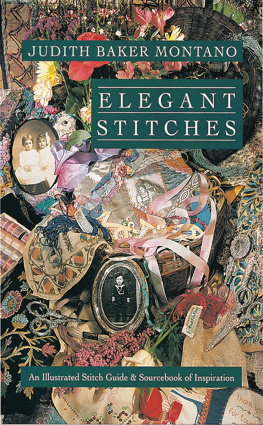
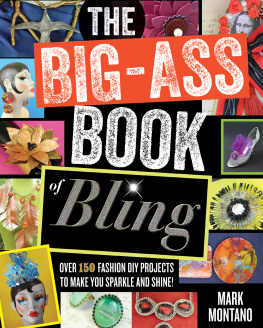
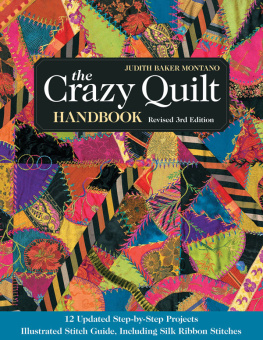
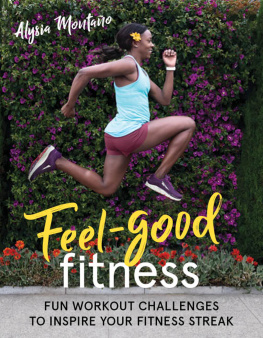
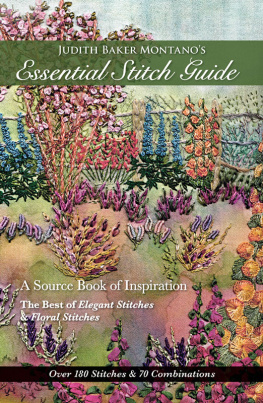

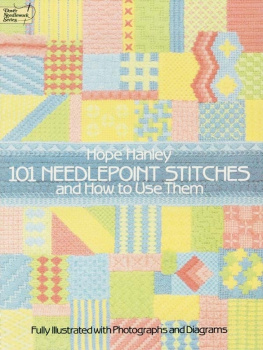

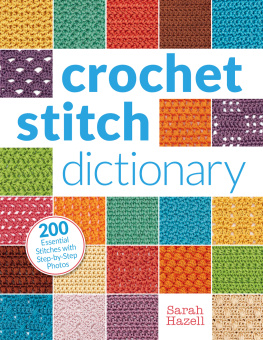

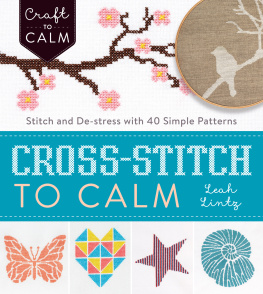
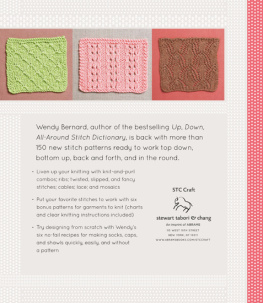



 mbroiderythe word conjures up so many visions and memories for me: crewel wool pomegranates flowing across an eighteenth century bedspread in Balmoral Castle; my grandmothers collection of tea towels, each heralding a new day of the week with precise outline stitches; the gift of a chain stitch horse head, lovingly made by my daughter in her seventh-grade home economics class; the delicate silk ribbon flowers that fill me with delight in the Land of Wonder, Down Under"; the silver crane worked in silk by a Japanese student, shyly handed to me as I rushed to catch my plane in Tokyo; the look in my friends eyes when I finished the crazy quilt landscape commemorating his parents; the assurance from my son that he loved the pink flowers decorating his new T-shirt and wore it anyway; the brightly colored yarmulkes lovingly embroidered by my friend for her sons Bar Mitzvah; concentrating on the priests gold emblazoned robes in order not to cry at my godfathers funeral; the first time I discovered free-form embroidery added texture and life to a painted canvas; and the realization that mixing needlework techniques opened new doors. I remember myself as a young girl, the unwilling student, spending endless hours learning basic embroidery to decorate pillow cases, tea towels, and table cloths for the hope chest I was positive Id never use. How could I know these primitive efforts would open the door to a wondrous career of teaching, lecturing, and designing, plus traveling throughout the world and meeting amazing new friends?
mbroiderythe word conjures up so many visions and memories for me: crewel wool pomegranates flowing across an eighteenth century bedspread in Balmoral Castle; my grandmothers collection of tea towels, each heralding a new day of the week with precise outline stitches; the gift of a chain stitch horse head, lovingly made by my daughter in her seventh-grade home economics class; the delicate silk ribbon flowers that fill me with delight in the Land of Wonder, Down Under"; the silver crane worked in silk by a Japanese student, shyly handed to me as I rushed to catch my plane in Tokyo; the look in my friends eyes when I finished the crazy quilt landscape commemorating his parents; the assurance from my son that he loved the pink flowers decorating his new T-shirt and wore it anyway; the brightly colored yarmulkes lovingly embroidered by my friend for her sons Bar Mitzvah; concentrating on the priests gold emblazoned robes in order not to cry at my godfathers funeral; the first time I discovered free-form embroidery added texture and life to a painted canvas; and the realization that mixing needlework techniques opened new doors. I remember myself as a young girl, the unwilling student, spending endless hours learning basic embroidery to decorate pillow cases, tea towels, and table cloths for the hope chest I was positive Id never use. How could I know these primitive efforts would open the door to a wondrous career of teaching, lecturing, and designing, plus traveling throughout the world and meeting amazing new friends?


 Fabrics. The fabric acts as the background for your needlework. It should enhance the needlework, not overshadow it. Always add an extra 2 to the fabric measurement to aid handling and stretching of the fabric prior to stitching. Ask yourself these questions when choosing a fabric:
Fabrics. The fabric acts as the background for your needlework. It should enhance the needlework, not overshadow it. Always add an extra 2 to the fabric measurement to aid handling and stretching of the fabric prior to stitching. Ask yourself these questions when choosing a fabric: